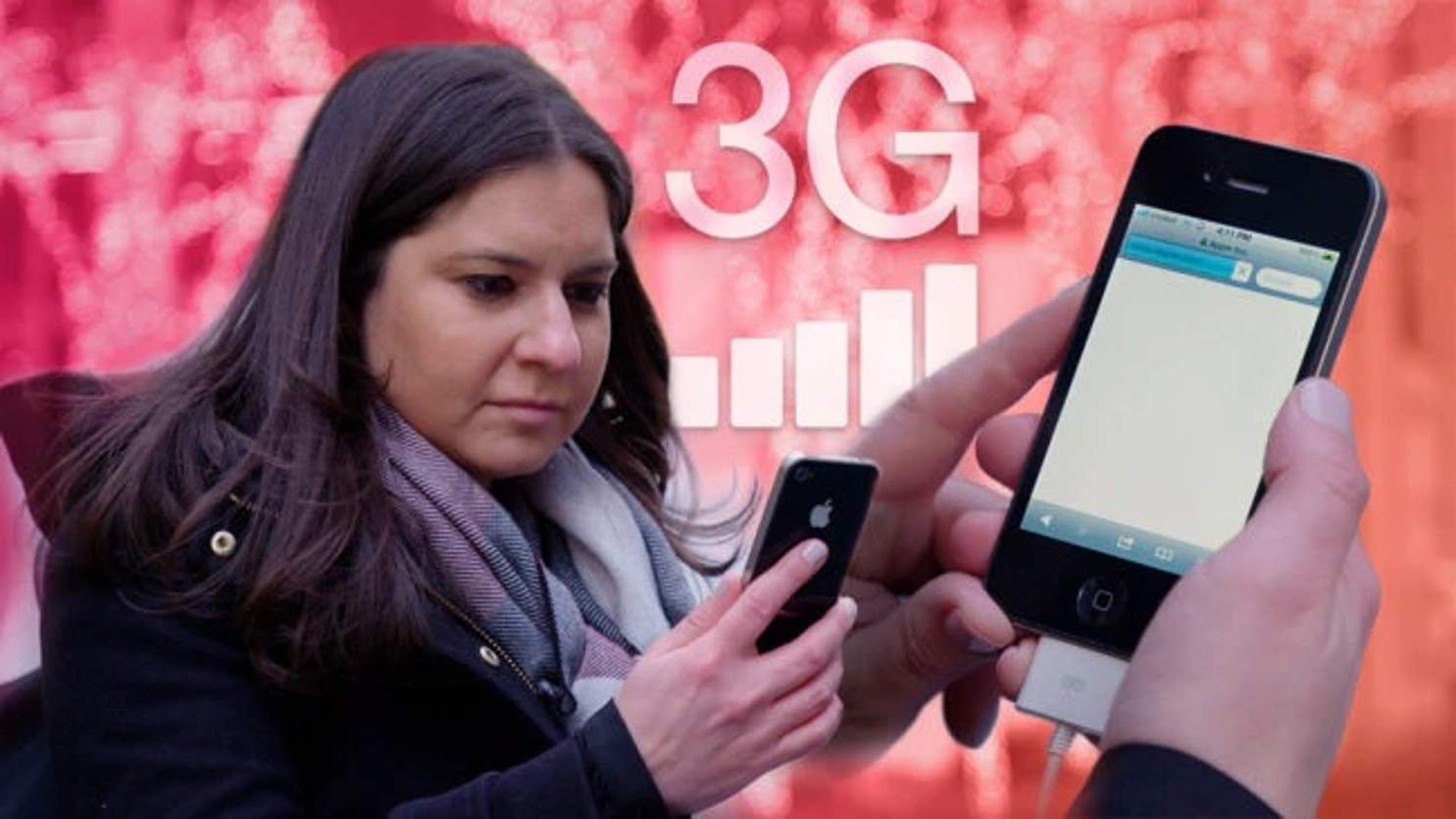In a strategic move to embrace the future of telecommunications, Australian telcos have announced plans to phase out the aging 3G network over the next year, making way for the widespread deployment of 5G technology.
Vodafone will be the first network to disconnect, followed by Telstra on June 30, 2024 and finally Optus network in September the same year.
Telstra regional general manager Michael Marom says Australia has outgrown 3G. “It’s time to say goodbye to 3G and welcome in a better 4G network.”
Telco Shut Down Schedule
- Vodafone – December 15, 2023
- Telstra – June 30, 2024
- Optus – September, 2024
This decision aligns with global trends as nations worldwide transition away from older network technologies in favor of faster and more advanced connectivity solutions.
The 3G Phase-Out Plan
Australia’s decision to retire the 3G network is a result of the network’s declining relevance and the need to allocate resources to more advanced technologies. The 3G network, once a groundbreaking innovation, has been overshadowed by the superior capabilities of 4G and 5G networks in recent years.
Over the next year, telecommunication providers in Australia will progressively shut down their 3G infrastructure, allowing consumers and businesses ample time to adapt to the changing landscape. This phased approach aims to minimize disruptions while ensuring a smooth transition for those still reliant on 3G services.
Telstra’s Cut-Off
In October 2019, Telstra made the announcement that it would be discontinuing its 3G network by June 2024, which translates to a period of 13 months or 275 working days, according to information available on Telstra’s official page.
The telecommunications company has reassured its customers that it is actively engaged in ongoing planning and enhancements for its mobile network.
The new 4G coverage is expected to match the size and reach of the existing 3G network. Additionally, Telstra is diligently working to repurpose the spectrum currently allocated to its 3G services and allocate it to the burgeoning 5G network.
Telstra’s 3G network has been in operation since 2006, and when it is eventually decommissioned, it will have dutifully served the Australian populace for more than eighteen years. It’s worth noting that Telstra had already phased out its 2100MHz spectrum earlier in 2019.
Vodafone’s 3G Shutdown Plans
Vodafone has announced its plan to deactivate its 3G network, with the shutdown date set for December 15, 2023. As part of this transition, the carrier, now under the ownership of TPG Telecom, has highlighted that a limited subset of its customer base still relies on 3G-only devices, including handsets, tablets, and various connected devices.
To ensure uninterrupted service, these customers are urged to upgrade their devices before the specified December 2023 deadline.
Furthermore, Vodafone has also pointed out that certain 4G handsets may require adjustments to their settings in order to maintain the ability to make and receive voice calls using the Vodafone 4G network.
Optus Network 3G Shutdown Plan
From September 2024, Optus will discontinue its 3G services, affecting users across its network.
To ensure a seamless transition, the telecommunications company has outlined its plans for the
year 2023, during which they will proactively reach out to customers whom they anticipate will be impacted by this change.
These communications will inform customers whether they need to upgrade their devices, their SIM cards, or both in order to adapt to the evolving network.
In addition to this personalized outreach, Optus has compiled a list of the ten most commonly used 3G devices that will be affected by the 3G network shutdown.
If you currently own one of these devices, namely the Aspera A42, Alcatel 2038, Alcatel OneTouch 2045, Telit HE910-EUR, Doro PhoneEasy 623 OPTUS, Samsung Galaxy A23, Samsung Galaxy J3, Telit HE910-EUD, Spacetalk Adventurer, or a Simcom SIM5320E, it is imperative to be aware that the 3G network shutdown will directly impact your device.
How Many People Will The 3G Shutdown Affect?
We may not have precise figures on the exact number of individuals affected by the impending shutdown, but an estimate from earlier this year suggested that approximately 3 million devices in Australia rely on 3G technology.
The majority of these devices are older models, in service for at least five or six years, and they will all cease to function once the shutdown occurs.
This category of affected devices encompasses a wide range, including smartphones, electronic funds transfer at point of sale (EFTPOS) machines, automobiles, tablets, and security cameras. Of particular concern is the estimated 200,000 medical alarms among these devices.
David Waldie, representing the medical alarm company Eevi, expressed deep concern over the situation. He emphasized that individuals, particularly elderly or vulnerable ones, who depend on these medical alarms for emergency assistance will be left without the support they need.
Additionally, there is apprehension that the 3G network shutdown could lead to reduced mobile coverage in rural areas where access to 4G or 5G networks is still limited.
Telstra has pledged to ensure 4G coverage in all areas currently served by 3G before the shutdown takes place. However, Optus has not made a similar commitment on its website, and Vodafone has indicated that its 4G coverage is roughly equivalent in scope to its 3G service
Why Is The 3G Network Shutting Down?
While 3G once served as the primary foundation for mobile coverage throughout Australia, its usage has significantly declined, with modern devices increasingly relying on the faster 4G and 5G networks.
Consequently, phone providers find themselves allocating a substantial portion of their network resources to a service that sees dwindling usage and is poised to become even less relevant in the future.
By discontinuing 3G coverage, providers such as Telstra or Optus can reclaim the radio frequency bands previously dedicated to this network and reallocate them to enhance and expand their 4G or 5G coverage.
According to Chris Taylor from Telstra the demand and the consumption of data has been increasing exponentially so that’s why the Telco needs to move its customers onto the 4G and 5G network
The process isn’t unique to Australia – similar 3G shutdowns have happened or been announced in the UK, USA and New Zealand.
The Promise of 5G Technology
The retirement of 3G heralds a new era of telecommunications in Australia. The rollout of 5G networks promises unprecedented speeds, ultra-low latency, and improved reliability. This leap in technology will not only enhance mobile experiences but also fuel the growth of emerging technologies, such as the Internet of Things (IoT), autonomous vehicles, and augmented reality.
Moreover, the expansion of 5G networks will play a crucial role in bridging the digital divide, ensuring that even remote and underserved areas have access to high-speed internet and the opportunities it brings.
Telecom Companies’ Commitment
Australia’s major telecommunications companies, including Telstra, Optus, and Vodafone, have been actively investing in the development of their 5G infrastructure.
This substantial commitment reflects their dedication to offering world-class connectivity to their customers and positioning Australia at the forefront of the global digital landscape.
The Reality of Australia’s 3G Shutdown
Since 2003, the advent of 3G technology in Australia has significantly benefited thousands of IoT devices and systems. This network has served as the essential infrastructure for numerous industries, ensuring their connectivity and the transmission of vital data.
From EFTPOS machines to the seamless operation of ambulance fleets, 3G has become an indispensable utility for countless organisations.
However, as we approach the impending shutdown of Telstra’s 3G network, our reliance on this technology places many industries and services in a precarious position.
Unlike other technological transitions, Telstra’s 3G switch-off is imminent. After June 2024, the 3G signal will be deactivated, rendering many devices and systems obsolete.
To safeguard Australia’s critical services and facilitate a successful transition to 4G, it is imperative that we focus on three key priorities: firstly, educating the market about the risks associated with inaction; secondly, clearly articulating the necessary steps organisations must take before June 2024; and thirdly, collaborating with industry stakeholders and the government to ensure that no business is left behind in this transition.
- The Evolution of Australia’s Carrier Network
Every generation of technology eventually reaches obsolescence before being superseded by newer advancements. For instance, 2G technology, groundbreaking when introduced in 1991 with its 40kbps speeds, has long been surpassed by 3G (2Mbps), 4G LTE (150Mbps), and now 5G (1Gbps).
The evolution of carrier networks serves two distinct objectives. Firstly, it aims to increase data speeds, and secondly, it endeavors to better cater to the needs of IoT devices, which often transmit small data packets, requiring extended battery life and broader coverage. To roll out these new network services, carriers must retire older networks and repurpose spectrum bands.
In light of these considerations, Australian telecommunications companies have decided to repurpose the 3G spectrum band.
Telstra has officially scheduled the shutdown of its 3G network for June 30, 2024, while Vodafone will initiate the switch-off on December 15, 2023.
Although Optus has not yet provided a concrete date, it has already begun reallocating its 3G 2100MHz spectrum band.
- Key Industries Facing Risks
It is estimated that Australia currently hosts between 2 and 3 million active IoT devices operating on 3G. M2M alone provides 170,000 3G connections to its customers.
In addition to industries like mining and resources, significant users of 3G-enabled devices include healthcare providers, utilities, emergency services, and road authorities.
The reality of the impending 3G shutdown is that once the signal is deactivated, all 3G-based services and devices will cease to function. This encompasses critical systems such as flood monitoring in regional areas, GPS systems in ambulances, “man down” safety devices in care facilities, and even traffic signal systems.
While it may be uncomfortable to prioritize certain industries over others, the critical nature of these services underscores the need for support and attention.
- Barriers to the Transition
To date, we have assisted numerous organizations in transitioning away from 3G. These transitions have involved fleets of connected parking meters for local councils, ticketing solutions for public transportation providers, and SCADA devices used by utilities to monitor sewer networks.
Two primary obstacles to these transitions have emerged: a lack of awareness regarding the 3G shutdown and limited internal technical resources to support the migration.
In some respects, it seems that certain segments of the Australian market are either in denial or hold the belief that the 3G shutdown may be extended, as has occurred in Europe with 2G shutdowns. Unfortunately, extensions are not anticipated, and Telstra has been unequivocal about its plans for several years.
- Hidden Costs of Delayed Transition
Different companies find themselves at varying stages in their transition to 4G LTE. For those that have not yet seriously considered their strategy, immediate action is imperative.
Well-planned and executed migrations can take anywhere from 12 to 18 months. These projects often necessitate a comprehensive reassessment of the business and technical aspects of the IoT solution. This may result in the need to redesign the technical architecture, replace hardware and equipment in the field, and address unforeseen challenges.
A recurring theme in M2M projects is the presence of hidden costs in project planning and unforeseen technical nuances that can have a substantial impact.
For example, the coverage of 4G may not match that of 3G, antennas purchased for 3G compatibility may not work for 4G, power and connector requirements may differ, and a new SIM plan may be required. Additionally, there can be extended lead times for hardware procurement, especially if sourced internationally.
- Ensuring the Success of Australia’s 3G Shutdown
In hindsight, it becomes evident that early national education and advertising campaigns could have been instrumental in engaging businesses and raising awareness about the impending 3G shutdown.
Ideally, these initiatives would have been led by telecommunications companies and supported by the government, recognizing the potential widespread impact on various industries and individuals.
For now, the primary focus should be on assisting businesses in taking practical steps to expedite the transition, minimize business disruptions, and avoid adverse impacts on customers.
Achieving a seamless transition hinges on having a well-defined migration plan, understanding the needs of existing and future devices, selecting the most suitable network technology, and adhering to a feasible timeline.
Australia’s 3G shutdown will undoubtedly have far-reaching consequences, affecting both industry and government across the board. Given the interdependence of devices, networks, and data, it is imperative that these elements are considered holistically.
Reflecting on the extensive efforts made during Australia’s transition from analogue PAL to digital TV a decade ago, it becomes evident that supporting a major technological shift demands substantial resources and coordination.
Unlike ensuring access to television broadcasts, the consequences of failing to transition critical services to 4G LTE in a timely manner will have deeper and more profound implications for both businesses and the broader community.
Global Technological Evolution
Australia’s decision to phase out 3G networks is part of the global race to deploy 5G technology. Nations worldwide are recognising 5G as a fundamental infrastructure for economic growth, innovation, and competitiveness in the digital era.







